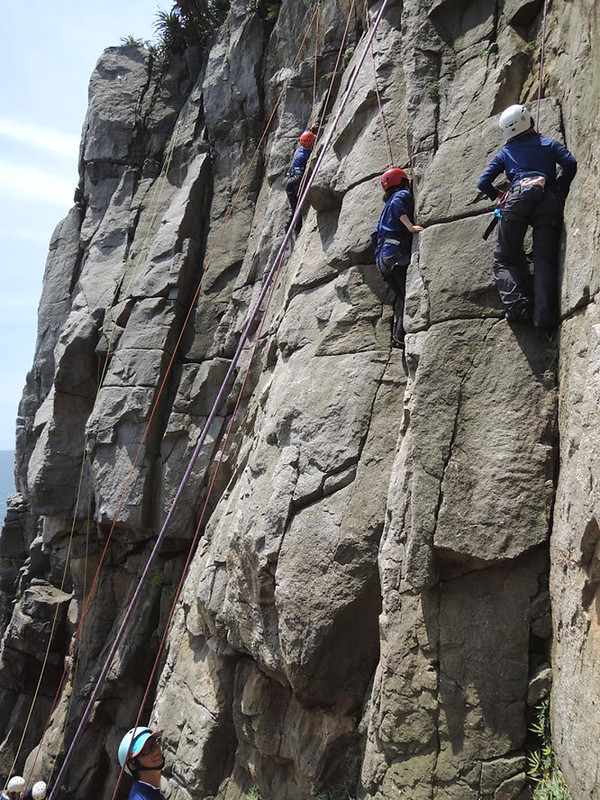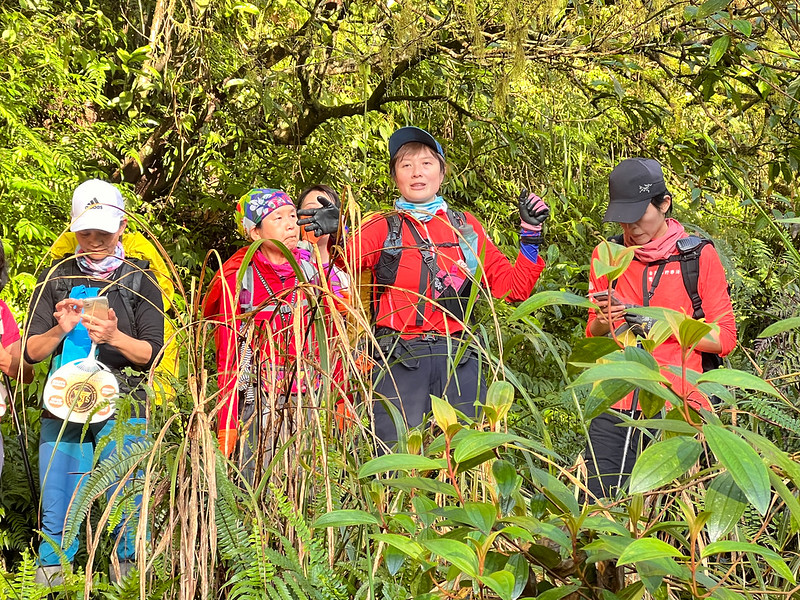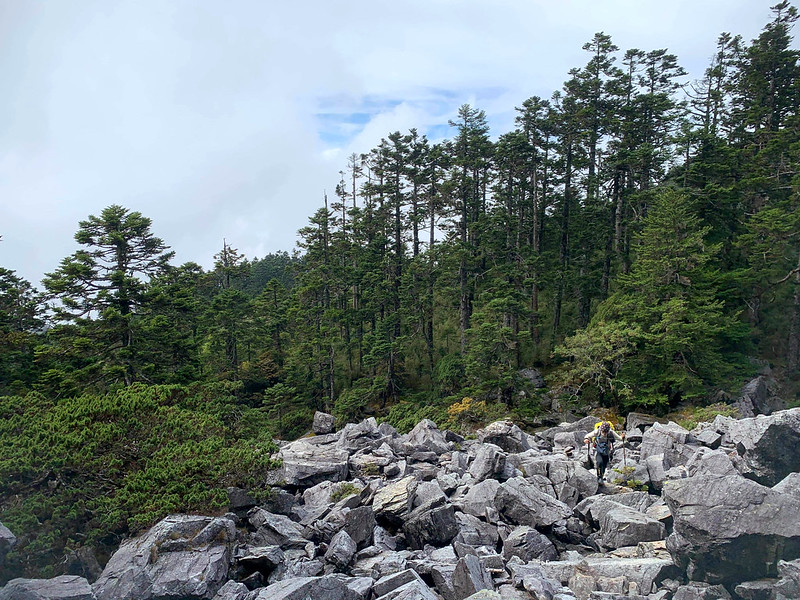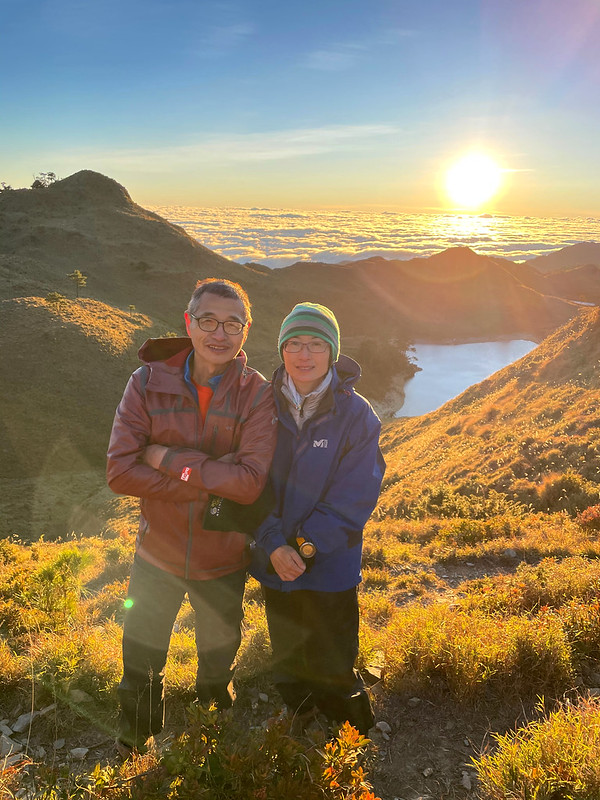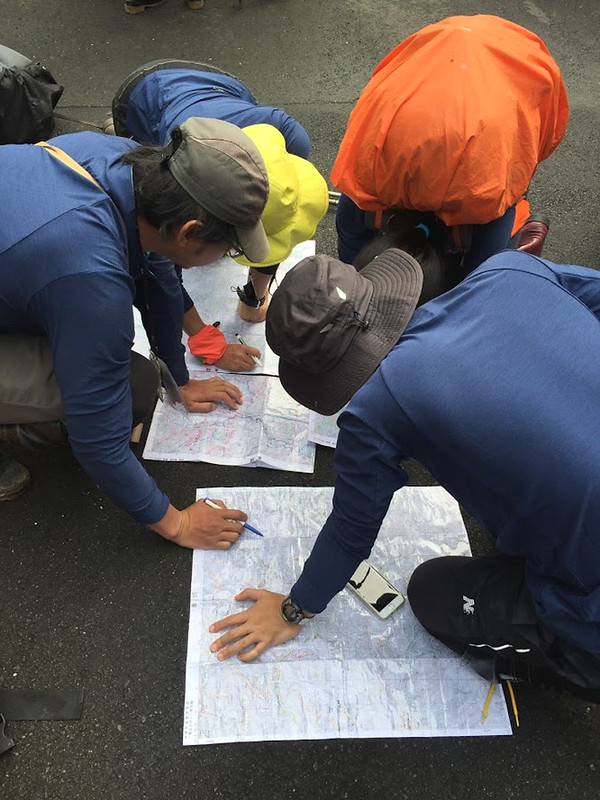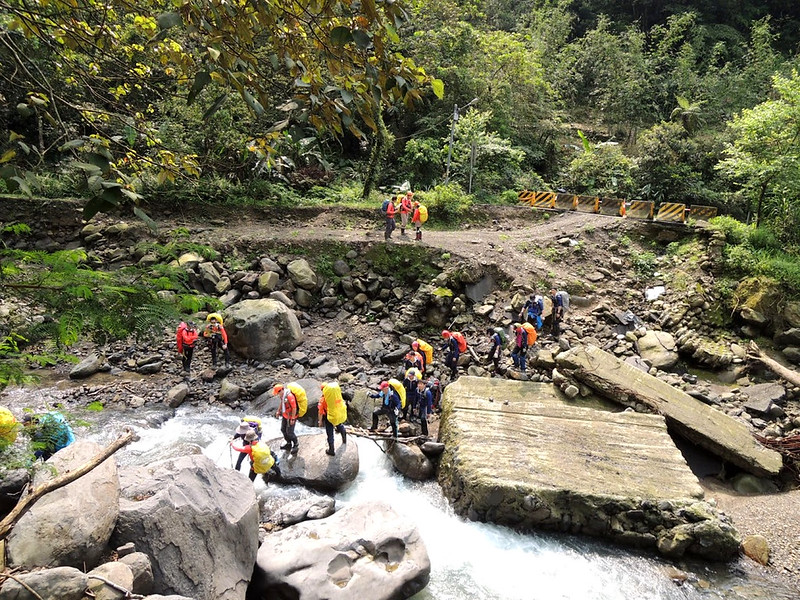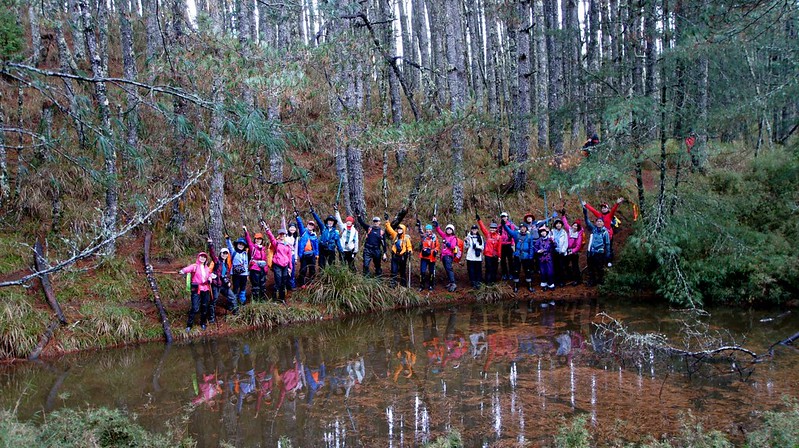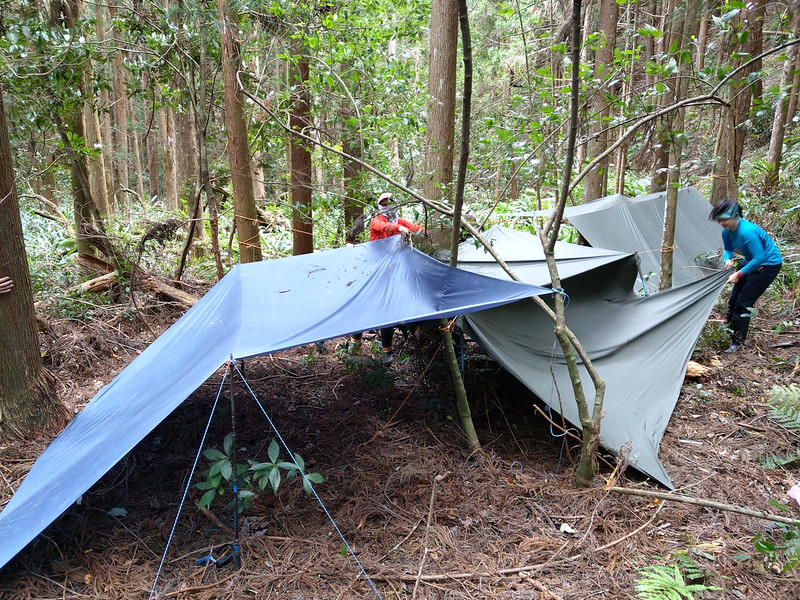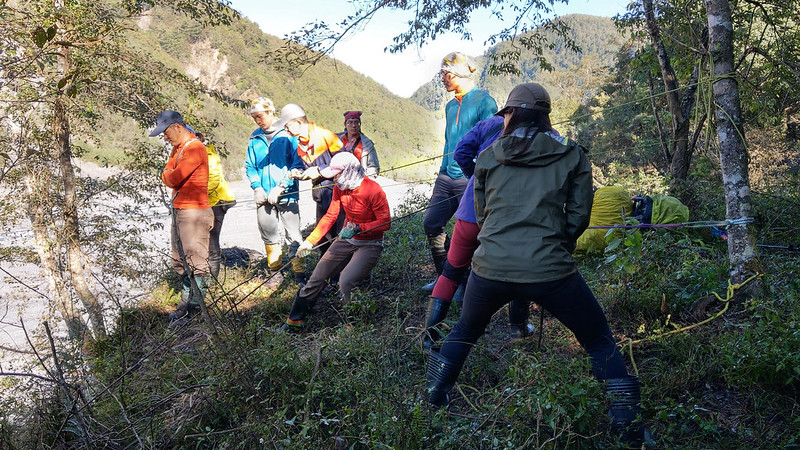How Hiking Guides Are Trained in Taiwan
For people who want to hike mountains in Taiwan, looking for a hiking guide is one of the options. I enjoy solo hikes, but I will go with qualified hiking groups if I want to do more dangerous or remote trails or mountains for safety reasons.
In this post, I will share how Taiwan Mountain LOHAS Association (LOHAS) trains its guides for day hikes (Suburban Mountain trails) and multiday hikes like 100 Peaks and other high mountain trails to help hikers have an unforgettable and safe trip in the wilderness of Taiwan.
Table of Contents:
- The Regulations about Outdoor Activity Guides in Taiwan
- Trail Classifications in Taiwan: Suburban, Mid-elevation, and 100 Peaks/High Mountains
- How to Choose Reliable Hiking Groups or Guides in Taiwan
- Hiking Guides Training for Suburban and Mid-elevation Mountain Trails
- Hiking Guides Training for 100 Peaks/High Mountain Trails
- Related Posts
Exploring Taiwan? Save Time with the Ultimate 2025 Hiking Guide! Discover the top hikes in every city and county across Taiwan—all accessible by public transport (bus links available). We've spent 50+ hours researching the best trails and transit options, so you can skip the hassle and start your adventure!
The Government Regulations about Outdoor Activity Guides
According to the regulations of Mountain Guides in Taiwan, there are four kinds of outdoor guide certificates: hiking, river tracing, rock climbing, and ice climbing.
To be a qualified guide, the prospective guides must be older than 18 years old and have no criminal records. In addition, they need at least 24-hour indoor training for related knowledge and 24-hour outdoor training, Basic Life Support (BLS) training for at least 8 hours, and others.
Your support empowers Taiwan Hikes to create more FREE content, making your hiking adventures in Taiwan even more enjoyable. Click "Buy Me A Coffee" or use our affiliate links to support.
Trail Classification in Taiwan: Suburban Mountains, Mid-elevation Mountains, and 100 Peaks/High Mountains
The most common labels for mountain trails in Taiwan are categorized by the altitudes.
Suburban Mountain Trails 郊山
Those trails close to cities that can be done in one day are categorized as Suburban Mountains, similar to day hikes in other countries. The altitude of those trails is below 1,500 meters above sea level.
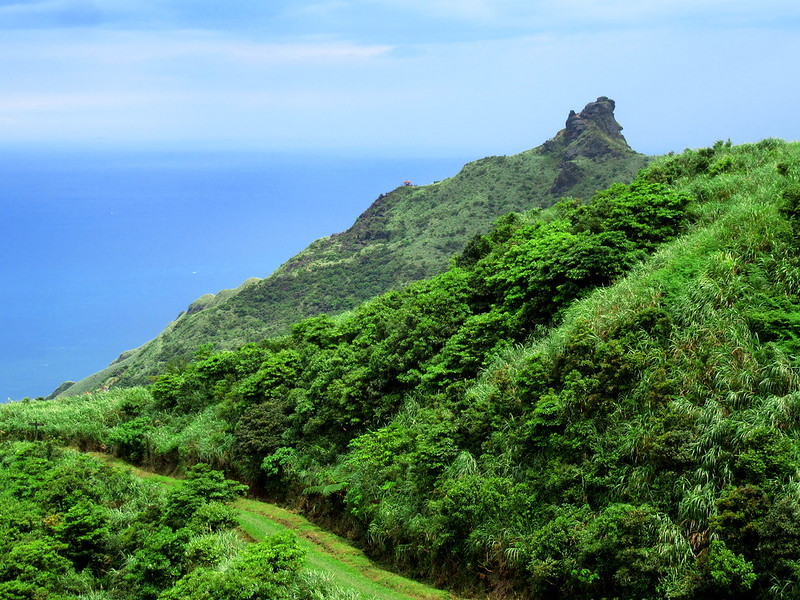
Another popular label to categorize the trails is Minor 100 Peaks or Xiao Baiyue. In contrast to 100 Peaks, Minor 100 Peaks are day hikes accessible for both new and seasoned hikers.
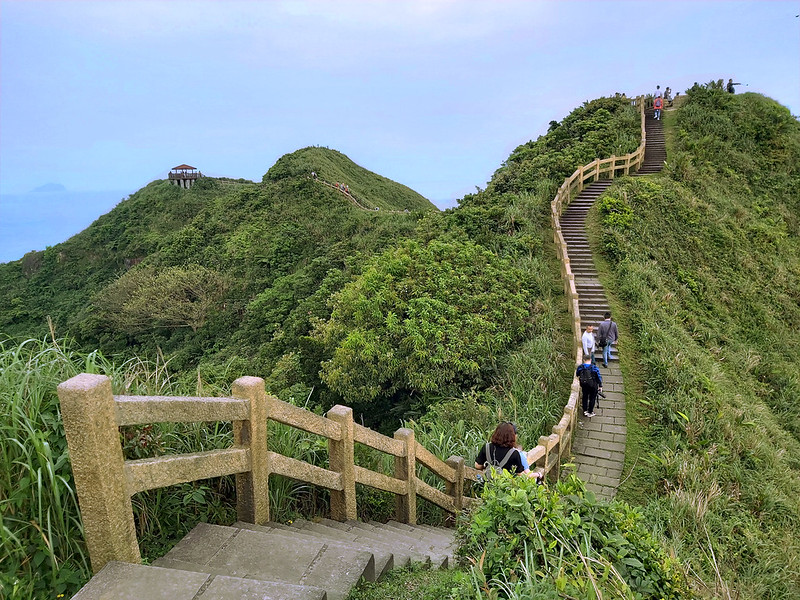
Mid-elevation Mountain Trails 中級山
The trails with altitudes between 1,500 and 3,000 meters are labeled as Mid-elevation Mountains. Those trails are more challenging than Suburban Mountains. Most Mid-elevation Mountains take two or more days to finish.
One of the features of those trails is the trail terrain is treacherous to traverse. Hikers need more navigation and physical fitness skills to take on those hikes. Mid-elevation Mountains are not for new hikers.
100 Peaks and High Mountains 百岳及高山
Taiwan is a small island, but there are at least 268 mountains that are 3,000 meters above sea level.
So, where did 100 Peaks come from?
Taiwan is a small island, but at least 268 mountains are 3,000 meters above sea level.
In December 1972, several trailblazers in the Taiwan hiking community founded Baiyue Club 百岳俱樂部. Bai means hundred, and Yue means peaks or mountains in Chinese. So those frontier hikers decided to pick 100 mountains/peaks above 3,000 meters, had triangulation stones, and were named on the map, and classified them as 100 Mountains/Peaks.
Since then, hiking 100 Peaks has become more and more popular and has become a goal for many Taiwanese hikers.

Difficulties ≠ Altitudes
Please note that not all 100 Peaks trails are challenging. Some can be easier than Suburban Mountains and most Mid-elevation Mountains. For example, Mt. Jyunda even can be done in one day.
However, most 100 Peaks trails are multiday thru-hikes, which require hikers with more advanced techniques and fitness. Therefore, doing those trails with qualified and experienced hiking guides is recommended.
Other than the trail altitudes, there are others that categorize the trails based on the difficulties. This post is to focus on hiking guide training, so I will not address this part here.
Why do we need to understand the classifications of mountain trails mentioned above?
Because established and responsible hiking groups in Taiwan require different training and experience for hiking guides to lead various hiking trips.
Since I started hiking in February 2017, I've been hiking with several groups, ranging from bad to good. I mostly hike with LOHAS, Taiwan Mountain LOHAS Association
How to Choose Reliable Hiking Groups or Guides in Taiwan
The Ratio of Guide to Hikers Is Important
If you are looking for hiking guides or hiking trips in Taiwan, hiking guides' training and experience are essential. However, please also pay extra attention to the ratio of hiking guides to hikers.
Unfortunately, some hiking groups only appoint one guide for a group of 10+ hikers for trips, especially for 100 Peaks, to reduce costs. If things happen, the only guide cannot take care of all the team members.
The ideal ratio for group hikes to Suburban or Mid-elevation Mountains is one guide to 10 hikers. For 100 Peaks or high mountain hikes, it's one guide to 6 or fewer hikers.
Other than LOHAS, THMA 新北市山岳協會 also has a healthy ratio of guides to hikers.
Google and Do Research Before You Sign Up
Another method to screen out not-so-good hiking groups is to Google. However, most reviews or comments on Google might be only in Chinese. Moreover, not most hiking guides speak English.
If you are looking for customized hiking trips, I highly recommend LOHAS. I'm not affiliated with LOHAS. I pay for my membership fees and non-free hiking trips. LOHAS guides are friendly and professional. LOHAS assigns more than enough guides to ensure that hikers can be well taken care of. You can also find many English-speaking guides at LOHAS.
Hiking Guides Training for Suburban and Mid-elevation Mountain Trails
Taiwan Mountain LOHAS Association holds guide recruitment almost every year, except for the pandemic. LOHAS requires those who plan to sign up to dedicate at least two and half months to the training. Therefore, the training is very intense, according to LOHAS' guides.
LOHAS is very kind to provide the details of their training and pictures.
Training Purpose
Establish trekking and team management skills to become LOHAS' qualified hiking guides for Suburban and Mid-elevation Mountains.
Training Period
From April to June
Indoor Training: 19:30 – 22:30 pm every Tuesday and Thursday
Outdoor Training: Every Saturday and Sunday. Participants need to stay in the wild every Saturday night. Some training requires participants to stay overnight on Friday.
Indoor Training: 19:30 – 22:30 pm every Tuesday and Thursday
Outdoor Training: Every Saturday and Sunday. Participants need to stay in the wild every Saturday night. Some training requires participants to stay overnight on Friday.
Training Venues
Indoor: LOHAS office
Outdoor: Trails in northern Taiwan
Outdoor: Trails in northern Taiwan
Training Fees
Miscellaneous fee: NT$1,000
Deposit: NT$3,000. The deposit will be refunded after participants receive the qualifications within the required time.
Deposit: NT$3,000. The deposit will be refunded after participants receive the qualifications within the required time.
Qualifications
Please join the required briefing to sign up for the physical fitness tests. Once you pass the tests, you are qualified to start the training.
Maximum Number of Participants
20 people
Briefings
There will be two briefings, and the maximum number of participants is 40 people for each. Please sign up as soon as possible.
Briefing Venue
LOHAS office
How to Sign Up
Fill out the form to attend the briefing section. Please get in touch with LOHAS if you have any inquiries.
Guide Training Curriculum for Suburban and Mid-elevation Mountain Trails
1. Participants Registration and Introduction of Gear
Participants register and pay fees and deposits.
Introduce the clothing and gear required for training.
2. Training Opening
LOHAS director and the lead instructor explain the training rules and matters needing attention.
3. Knotting
Introduction of knotting, and practice and applications of six main knot tying skills.
4. Mountain Meteorology
Introduction to mountain meteorology and how to interpret the weather forecast and data from the Central Weather Bureau in Taiwan for hiking.
5. Basic Life Support (BLS) Training from Red Cross Taiwan
Red Cross instructors give the training in providing CPR, treating fractures and injuries, bandaging, immobilizing, etc.
6. Camping Skills
How to find and lay out a campsite, pitch a tarp or tent, set up a campfire and cook, how to stay warm, learn knotting skills for camping, etc.
7. Hiking Communication and Using Portable Handheld Two-way Radios
How to use portable handheld two-way radios (walkie-talkie) and how to call for help.
8. Outdoor Camping
Camping: set up and lay out a campsite, set up a campfire and cook meals, how to send smoke signals, and clean up the campgrounds.
9. Use Maps and Compass
Introduction of maps and compass, how to use a compass and an altimeter.
10. Orientation and Navigation
How to use a compass to orient the map and read a topographic to visualize the terrains and heights to navigate and march on the trail.
11. Outdoor: Orientation and Navigation
Outdoor navigation courses using maps and compasses.
12. How to Read a Map, Part 1
How to prepare, read, report, and navigate maps.
13. How to Read a Map, Part 2
How to prepare, read, report, and navigate maps.
14. Outdoor: Orientation and Navigation
How to use a compass, an altimeter, and a map to orient and navigate in the woods.
15. Discussion and Review of Orientation and Navigation
Discussion and reviews.
16. Hiking Guides' Responsibilities and Group Management
Guides' responsibilities, group management, people skills, how to react and deal with different situations, etc.
17. Hiking Ethics
Hiking ethics
18. Outdoor: How to Traverse in the Woods
Orientation and navigation with maps in real-world situations, handling accidents, first aid response drills, group management skills, etc.
19. How to Deal with Accidents
How to handle and react to accidents, injuries or other hazards, introduction of poison plants, and how to manage the group when accidents or injuries happen.
20. Report Accidents and Call for Emergency Assistance
When and how to call for emergency assistance, how to communicate with the rescuers, and how to organize a rescue team.
21. Outdoor: Report Accidents and Ask for Help
First aid response drills: slips and falls, applying first aid, carrying the injured, remaining with the team, searching for the missing hiker, reporting an incident, and asking for a helicopter rescue.
22. Introduction of River Tracing and Rock Climbing
The basics of river tracing and rock climbing and gear.
23. Rock Climbing at the Bouldering Gym
Rock climbing at the bouldering gym.
24. Outdoor: River Tracing
Climbing, rappelling, and rope using techniques.
25. Introduction of the Tests to Receive Certificates
Introduction of exams and rules.
26. Written Tests
Written tests
27. Outdoor Tests
Outdoor tests
Hiking Guides Training for 100 Peaks/High Mountains
Prerequisites: Qualified hiking guides from LOHAS for Suburban and Mid-elevation Mountain trails with hiking group-taking experience.
After Training:To become a qualified guide who takes 100 Peaks/High Mountain trails for LOHAS, trainees need to be in charge of at least two 100 Peaks hikes. Those hikes must be over three days without booking the on-site catering service. There will be seasoned guides in that group to evaluate their performance to decide whether they can be qualified.
I want to thank LOHAS' guide Julie Huang 黃茱莉 for providing her training materials and images. She's a qualified hiking guide for Suburban/Mid-elevation and High Mountain trails. Julie speaks English fluently, too.
1. Indoor: Introduction of Gear for High Mountain Hiking/Trekking
2. Indoor: Cooking and Meal Preparation for Hiking Mountain Hiking/Trekking.
3. Indoor: Training Orientation and Gear Review
4. Fitness Training
5. Fitness Training
6. Hiking Physiology and Training
7. How to Deal with Accidents, Using Satellite Phone, etc., Part 1
8. Camping Management and Meal Preparation
9. Camping Management and Meal Preparation
10. How to Deal with Accidents, Part 2
11. First Aid Response Drills, Knotting Applications and Traversing Treacherous Terrains, Day 1
12. First Aid Response Drills, Knotting Applications and Traversing Treacherous Terrains, Day 2
13. First Aid Response Drills, Knotting Applications and Traversing Treacherous Terrains, Day 3
14. High Mountain Administration and Permit Applications
15. How to Take a Hiking Group
16. Regulation and Legal Issues for Hiking
17. WAFA (Wilderness Advanced First Aid) Training Experience Sharing
18. Portable Altitude Chamber for Acute Mountain Sickness
19. Introduction of Tests
20. What is GPS and How to Use GPS
21. Tests
Trainings Provided by Other Hiking Associations
Not every hiking group trains their guides like this in Taiwan. Instead, each group has its way of selecting hiking guides.
If you speak Chinese and are interested in becoming a hiking guide, the following hiking associations also have training for future guides. I only list hiking or mountaineering associations here:
THMA 新北市山岳協會
Chinese Taipei Mountaineering Association 中華民國健行登山會.
THMA 新北市山岳協會
Chinese Taipei Mountaineering Association 中華民國健行登山會.




